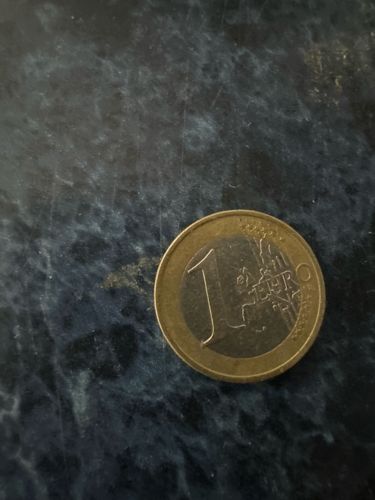1 Euro Coin
Country of Origin: Eurozone Member State (Exact country not discernible from image, as the common side is shown)
Year of Issue: Not discernible from the image (Euro coins have varying issue dates from 2002 onwards)
Denomination: 1 Euro
Composition: Inner part: Cupronickel (nickel brass, three layers: nickel brass, nickel, nickel brass); Outer part: Nickel brass (copper, zinc, nickel)

Brief Description
The image shows the common side of a 1 Euro coin. It features a map of Europe (initially showing the 15 member states of the European Union at the time of introduction, later updated to show Europe as a whole), with the denomination '1 EURO' largely displayed on the right. The 12 stars of the European Union are present around the edge.
Historical Significance
The Euro coin series was introduced on January 1, 2002, replacing the national currencies of the participating EU member states. The 1 Euro coin is a significant symbol of European economic and political integration, representing a common currency for millions of people across various European nations. Its design, particularly the common side, emphasizes the unity and interconnectedness of Europe.
Estimated Value
The face value is 1 Euro. For circulated coins, the numismatic value is generally equal to its face value, unless it's a rare commemorative issue or in uncirculated/proof condition from a specific country or year. Without knowing the specific country, year, and condition of this particular coin, a precise higher numismatic value cannot be given.
Care Instructions
To preserve the coin's condition, handle it by the edges to avoid transferring oils from your skin. Store it in a dry, stable environment, preferably in coin holders, albums, or slabs designed for numismatic items, to protect it from scratches, dust, and environmental damage. Avoid cleaning the coin, as this can often decrease its numismatic value.
Created At: 2025-09-06T11:11:30.681553